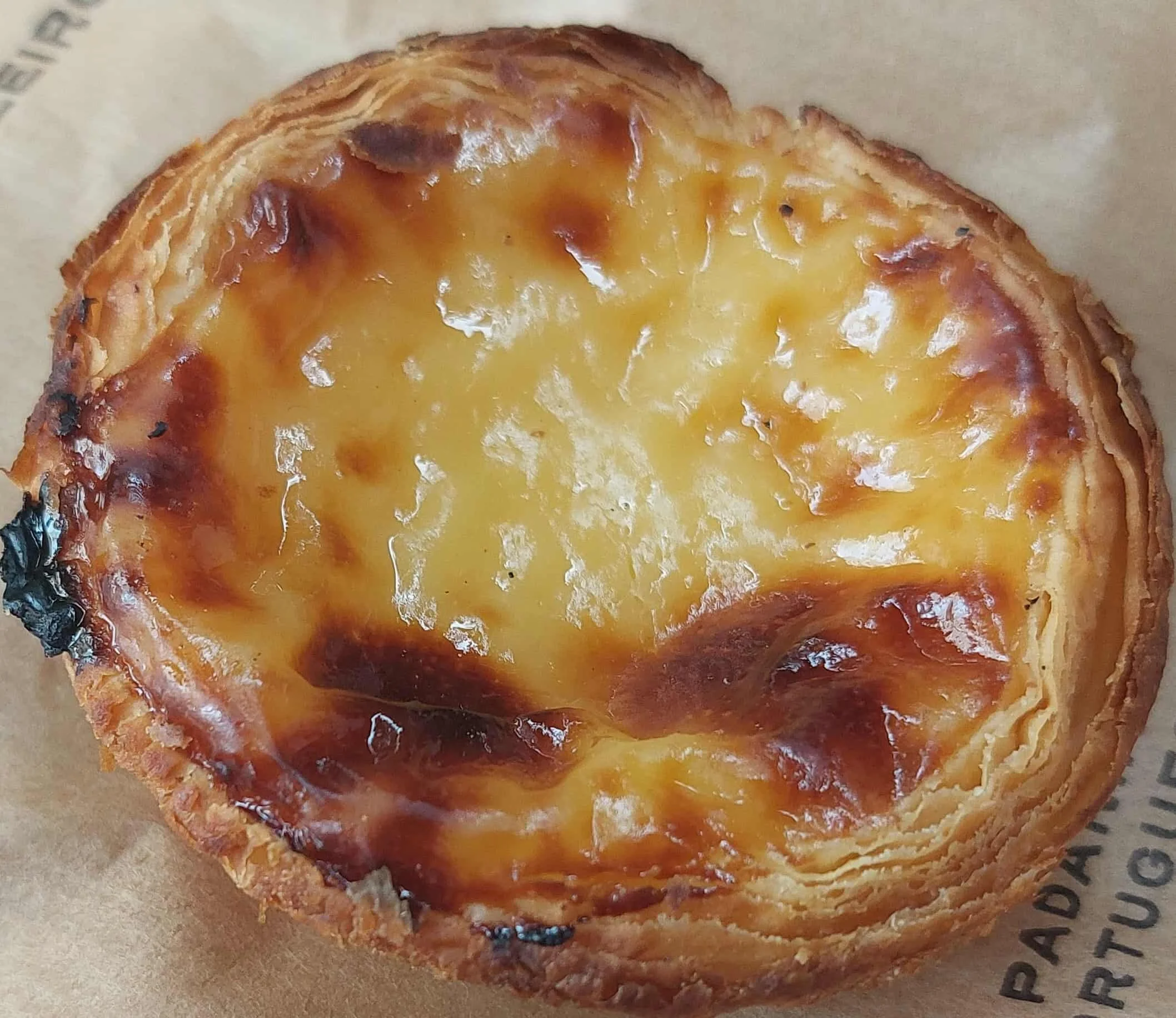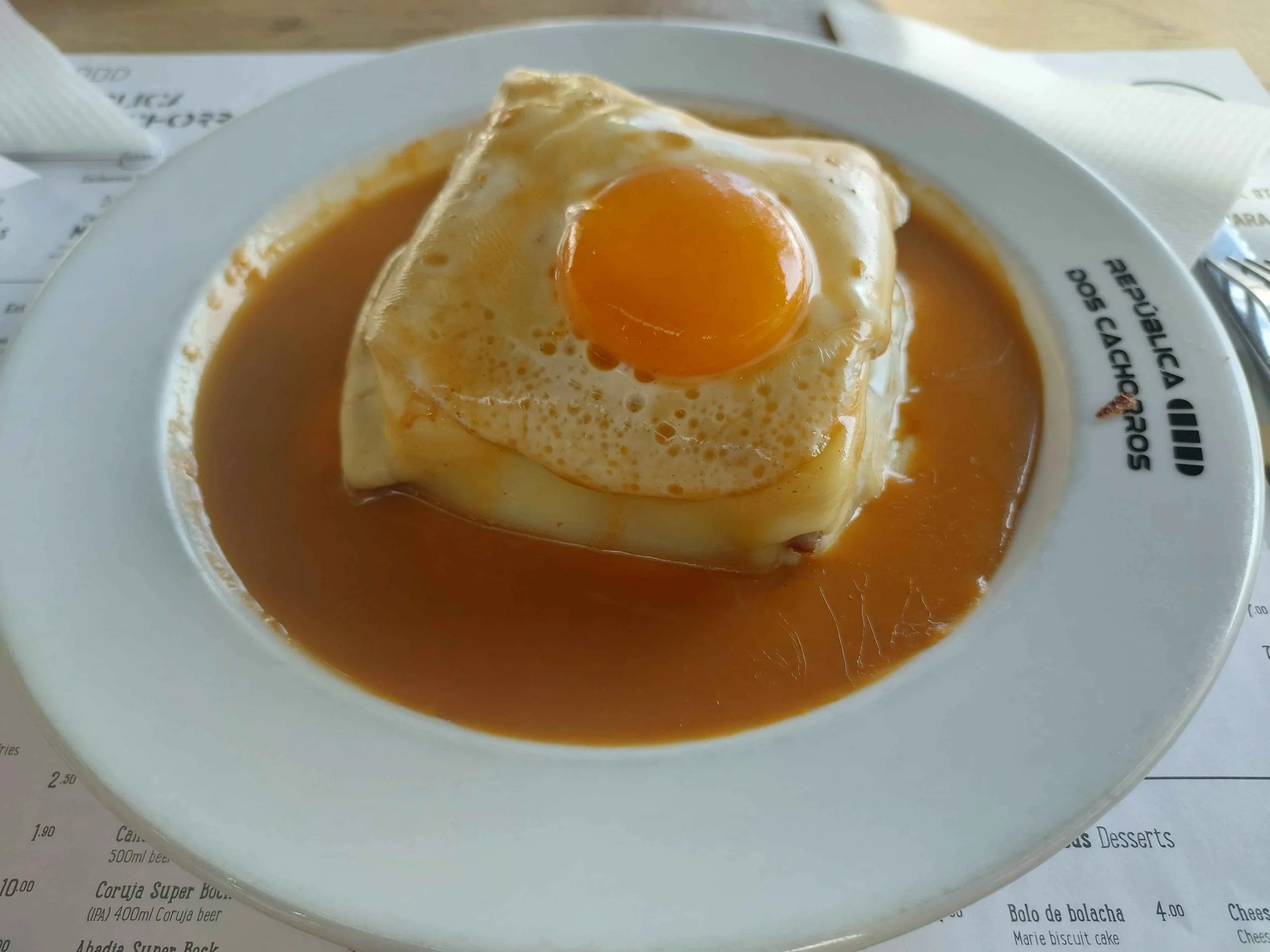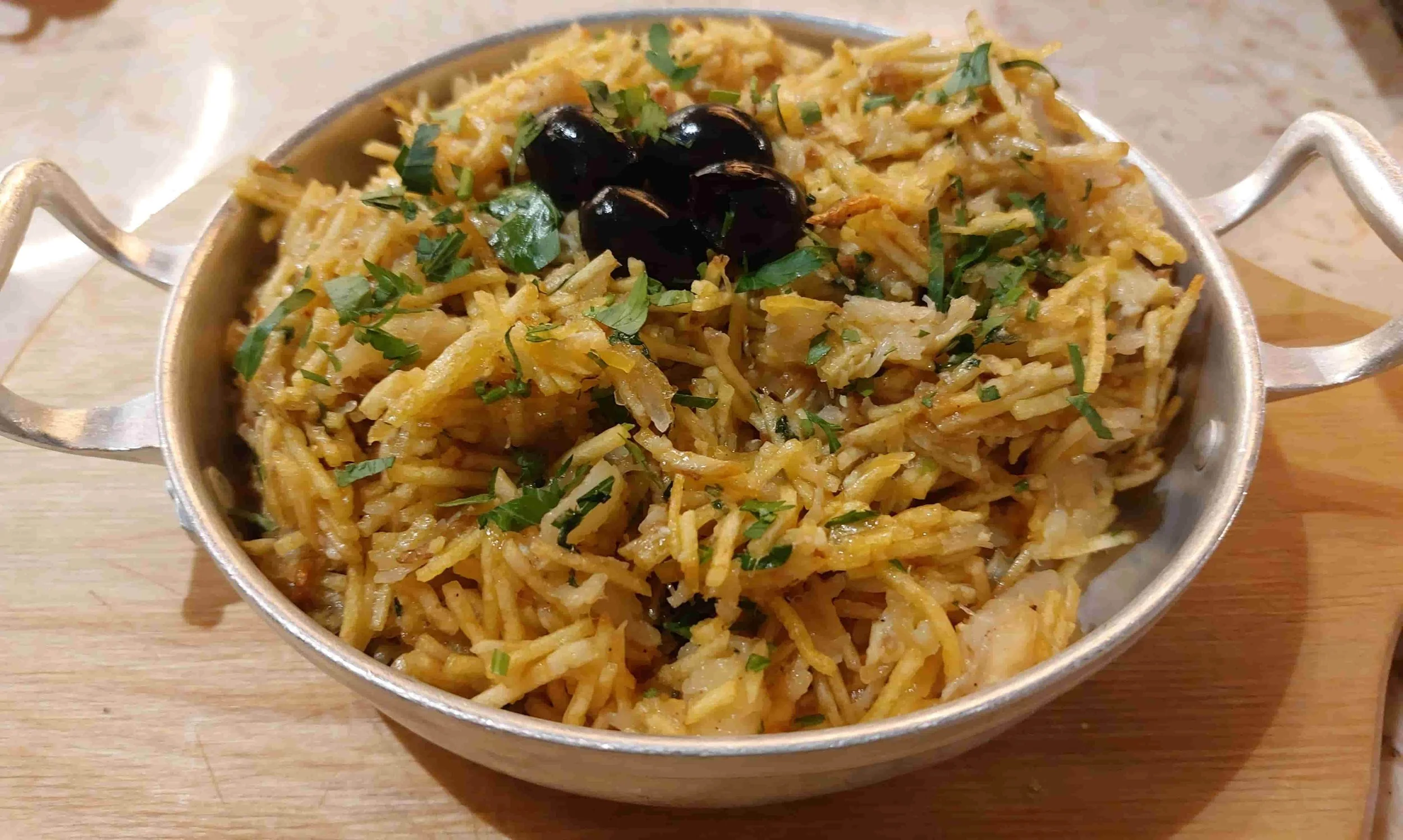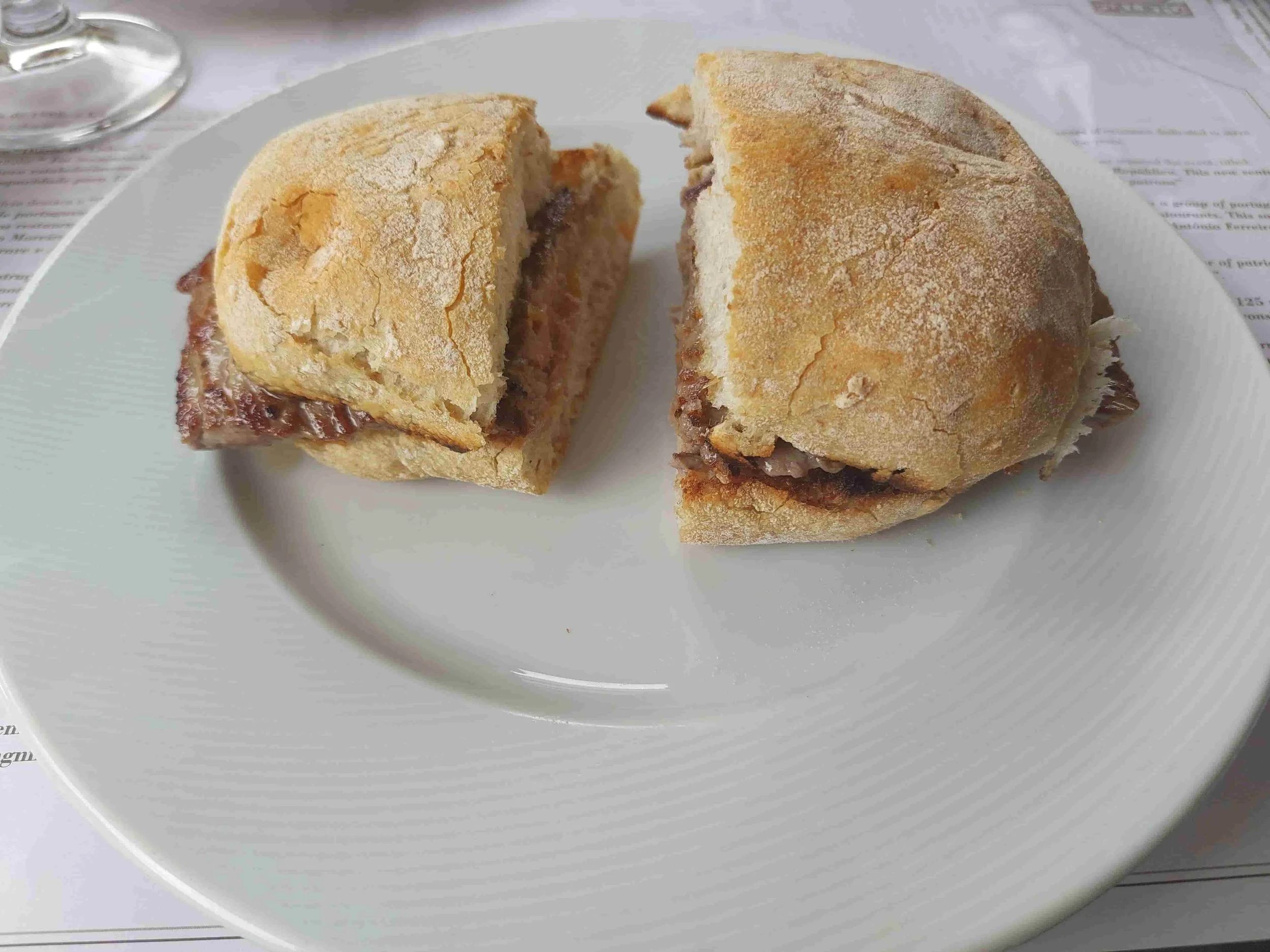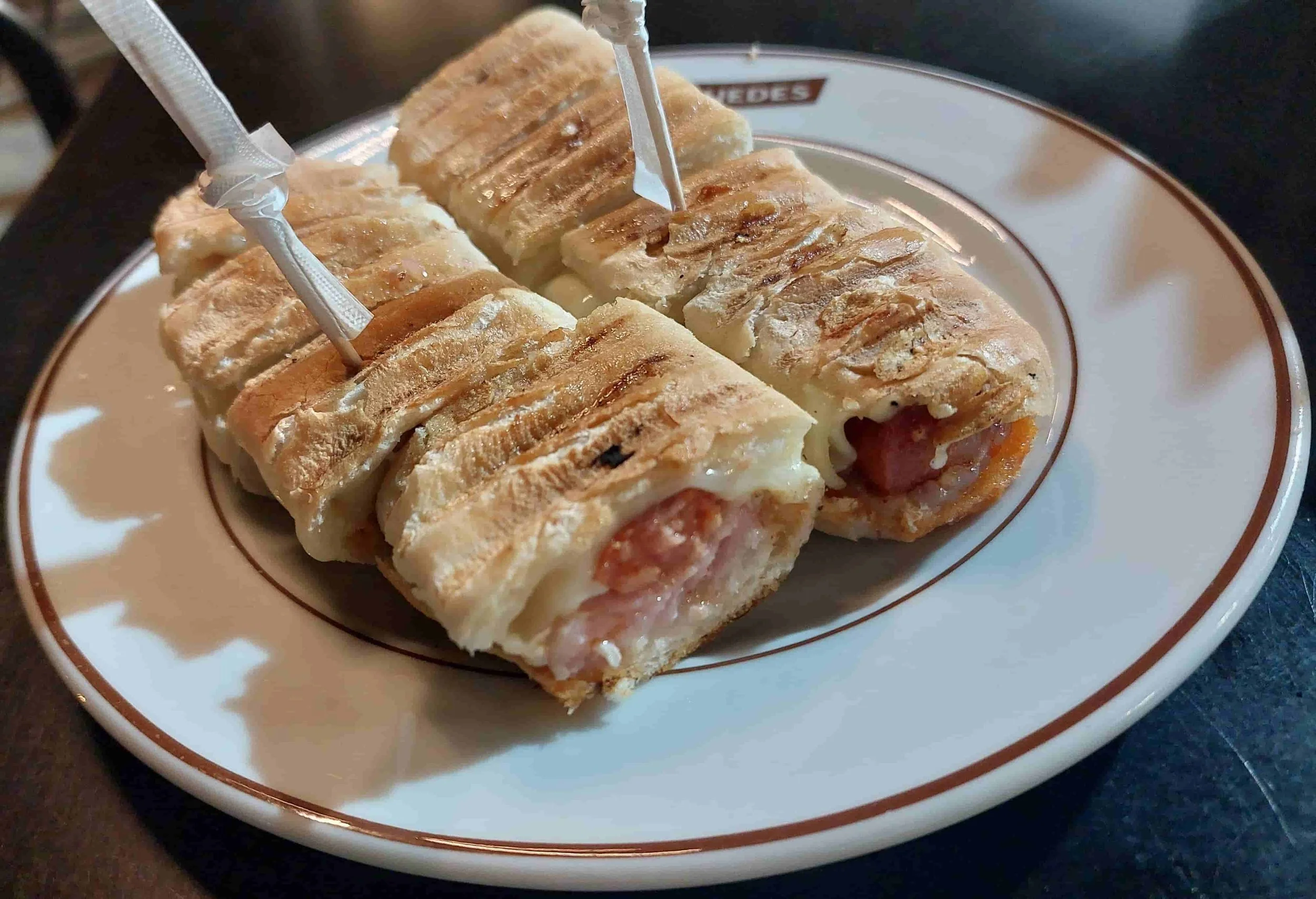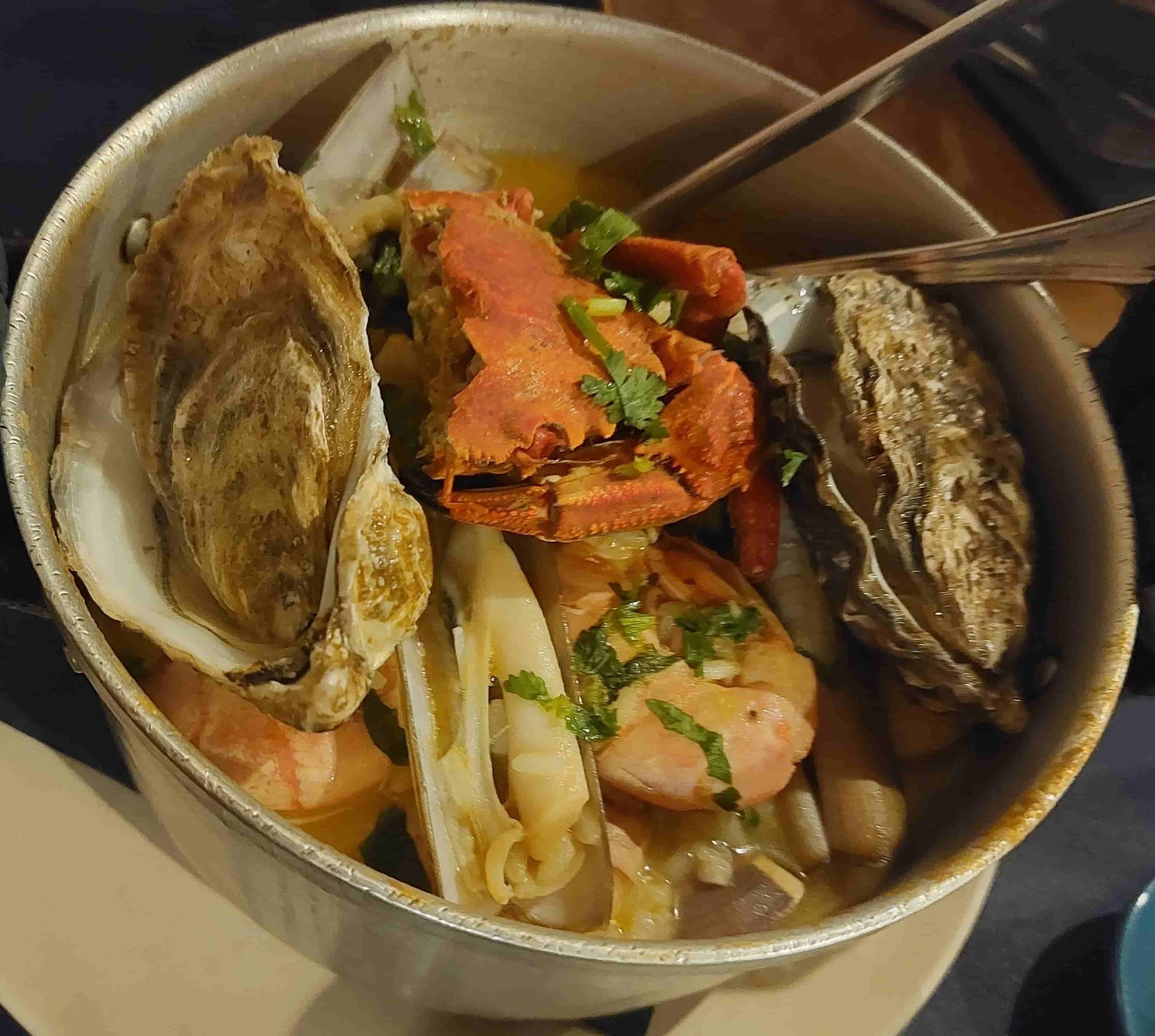must-try food Portugal
our top 10 traditional Portuguese foods you have to try
pastel de nata
Portuguese custard tart
What is it?
Portugal’s most famous food? Portugal’s most delicious food? Both statements could very well be true. The Pastel de Nata is a Portuguese custard tart that’s loved worldwide. It features a crisp, flaky pastry shell filled with a creamy, sweet egg custard, lightly caramelised on top. Best enjoyed warm, and optionally dusted with cinnamon, it’s a must-try when visiting Portugal, or, if you’re like us, a must-try several times a day! One of the world's best pastries. They’re typically eaten as a snack or dessert, often with coffee or tea.
What is in it?
Puff pastry or shortcrust pastry
Egg yolks, sugar, milk or cream, vanilla or lemon zest
Optional cinnamon for dusting
Where can I eat it?
Pastel de Nata are available across Portugal in cafés, bakeries (pastelarias), and even supermarkets, but the best are usually from traditional pastelarias in Lisbon and Porto. A great place in Lisbon to get them is Aloma, which has won awards for the best Pastel de Nata.
Vegetarian.
bifana
marinated pork roll
What is it?
The Bifana is a Portuguese classic, a delicious pork sandwich, messy & juicy, often thought of as the perfect late-night snack, akin to a kebab or greasy burger in other countries. Thin slices of pork are marinated in garlic, white wine, paprika, and spices, then quickly fried and stuffed into a soft roll. It’s a simple everyday snack enjoyed across Portugal. Think of it as Portugal’s answer to pulled pork: thinner, juicier, and with a garlicky kick.
What is in it?
Thin pork slices marinated in garlic, white wine, paprika, and sometimes a touch of chili, served in a soft roll. Optional toppings include mustard, piri-piri sauce, or sautéed onions.
Where can I eat it?
Bifanas are everywhere in Portugal, from casual cafés and snack bars to street stalls. They’re especially popular after a night out, and each region or eatery tends to have its own twist on the marinade and spice level.
Dairy free.
francesinha
classic Porto sandwich
What is it?
The Francesinha is a huge, decadent sandwich from Porto, but be warned, this is not the type of sandwich to eat with your hands. Often described as the ultimate comfort food, I would personally call it the ultimate hangover food, in the best possible way. Layers of bread, cured meats, steak or roast beef, and melted cheese are smothered in a rich, spicy tomato and beer sauce, then usually baked or grilled until gooey and bubbling. Some places also serve vegetarian versions made with meat substitutes and mushrooms, and even a vegan version. Often served with fries, it’s a filling meal that hits every craving.
What is in it?
Bread (usually toasted)
Various cured meats: ham, linguiça, smoked sausage
Steak or roast beef
Melted cheese, covering the whole sandwich
Spicy tomato-and-beer sauce
Optional fried egg on top
Served with fries
What is it?
The Francesinha is a specialty of Porto, found in cafés and restaurants dedicated to the dish. It’s less common outside northern Portugal, though some restaurants in Lisbon and other cities serve it. Traditionally enjoyed as a lunch or dinner, it’s perfect for those with a big appetite or recovering from a night out!
Vegetarian and vegan versions available.
bacalhau à Brás
shredded cod
What is it?
Bacalhau à Brás is Portugal’s most famous codfish dish, combining shredded salted cod with onions, thinly cut fried potatoes (matchstick style potatoes), and scrambled eggs. It’s perfectly balanced, salty, savoury, and slightly creamy, and often finished with a sprinkling of chopped parsley and black olives.
What is in it?
Shredded salted cod, onions, thinly cut fried potatoes, scrambled eggs, olive oil, fresh parsley, and black olives. Sometimes garlic is added for extra flavour.
Where can I eat it?
Bacalhau à Brás is commonly available in traditional Portuguese restaurants (tascas) and seafood establishments throughout the country.
Dairy and gluten free.
arroz de pato
duck rice
What is it?
Arroz de Pato is a traditional Portuguese duck rice dish, full of flavour. The duck is simmered until tender, then shredded and baked with rice that absorbs the rich duck broth. The dish is finished in the oven, usually topped with slices of chouriço (Portuguese sausage).
What is in it?
Duck
Long-grain rice
Chouriço
Onion, garlic, carrot, bay leaves, olive oil, and white wine
Where can I eat it?
You’ll find Arroz de Pato in many traditional Portuguese restaurants (tascas) across the country. It’s particularly associated with northern Portugal, though it’s available throughout the country.
Dairy & gluten free.
prego
garlic steak sandwich
What is it?
A Prego is a classic Portuguese steak sandwich, simple and tasty. Thin slices of beef steak are quickly grilled and served in a soft roll, brushed with garlic butter. It’s sometimes topped with mustard, ham, cheese, or a fried egg, and is typically eaten as a quick lunch, snack, or late night food after a night out. The sandwich is versatile, with each establishment sometimes adding its own twist. The name literally means “nail.”
What is in it?
Thin beef steak
Soft bread roll (often lightly toasted)
Garlic butter
Optional toppings: mustard, cheese, ham, fried egg
Often served with fries on the side
Where can I eat it?
Pregos are ubiquitous in Portugal, particularly in Lisbon and Porto. You’ll find them in cafés, snack bars, and casual restaurants, often served as a snack or simple main meal, we had a good one at Galeto a famous restaurant in Lisbon.
Traditionally dairy free.
cachorro
Portuguese hot dog
What is it?
A Cachorro (which literally means “puppy”) is Portugal’s take on the hot dog and a popular fast food snack sold in cafés, fast food places, and casual eateries. Unlike a standard hot dog, the bun is often lightly toasted, and some versions, especially those with cheese, are finished under a grill so the cheese melts over the sausage. The sausage is typically grilled or boiled, then dressed with toppings ranging from mustard, ketchup, and mayonnaise to sautéed onions, pickles, or piri-piri sauce. It’s definitely a step up from a standard hot dog.
What is in it?
Sausage (usually pork or a pork-beef mix)
A bun
Toppings including mustard, ketchup, mayonnaise, sautéed onions, pickles, piri-piri sauce
Porto style versions may include cheese and ham
Where can I eat it?
Cachorros are widely available across Portugal in cafés, snack bars, and street food stands. They’re especially popular in Lisbon and Porto, often eaten on the go as a snack. Variations exist depending on the region and vendor, but the classic grilled sausage in a toasted bun with mustard or mayonnaise is the standard.
pastéis de Bacalhau
cod fritter
What is it?
Pastéis de Bacalhau are Portuguese codfish fritters, a bit like a Portuguese fish cake, crisp on the outside and soft inside, traditionally served as a snack, appetizer, or part of a larger meal. They’re sometimes also called bolinhos de bacalhau, and are a staple in cafés and tascas and really delicious.
What is in it?
Salted cod (bacalhau)
Mashed potatoes
Onion, garlic, egg, and parsley
Where can I eat it?
Pastéis de Bacalhau are widely available across Portugal. They’re common in traditional cafés and tascas, as a starter in restaurants, or even at markets.
Dairy free & traditionaly gluten free.
baba de camelo
caramel mousse
What is it?
Baba de Camelo is a classic Portuguese dessert, sweet, creamy, and delightfully simple. Its name literally translates to “camel’s drool,” but don’t let that put you off. It’s a smooth, caramel flavoured mousse that’s decadently delicious and the perfect finish to a meal. The quirky name comes from its silky, slightly sticky texture, which humorously reminded someone of a camel’s drool. It’s a staple in Portuguese homes and traditional restaurants.
What is in it?
Sweetened condensed milk
Eggs (yolks for the mousse, whites sometimes whipped into meringue)
Optional toppings: crushed cookies, almonds, or chocolate shavings
Where can I drink it?
Baba de Camelo is commonly found in traditional Portuguese restaurants and cafés across the country. It’s often served chilled in small ramekins. We tried it at a great fish restaurant in Lisbon called Invicta Madragoa.
Vegetarian and gluten free.
arroz de marisco
seafood rice
What is it?
Arroz de Marisco is a classic Portuguese seafood rice dish. Often compared to seafood paella, it is made with short grain rice cooked in a savoury seafood broth, containing a mix of shellfish and fish, and finished with fresh herbs. The rice is typically slightly saucy rather than dry like a paella. It is often served in a large pot, with even bigger versions available for sharing.
What is in it?
Short-grain rice
A mix of seafood, prawns, clams, mussels, sometimes crab or fish
Onion, garlic, olive oil, and tomato
White wine and fish or seafood broth
Fresh herbs such as parsley or coriander
Where can I eat it?
Arroz de Marisco is widely available in coastal restaurants and traditional marisqueiras (seafood restaurants) across Portugal, particularly in Lisbon, Porto, and the Algarve. We shared one filled to the brim with seafood at Invicta Madragoa in Lisbon.
Dairy and gluten free.
Ingredients listed reflect common or typical components of this dish as served in restaurants or street‑food vendors. Variations by region, season, or vendor are common. This information is provided for general reference only. If you have dietary restrictions or allergies, please verify ingredient details independently. We assume no liability for accuracy or outcomes.
